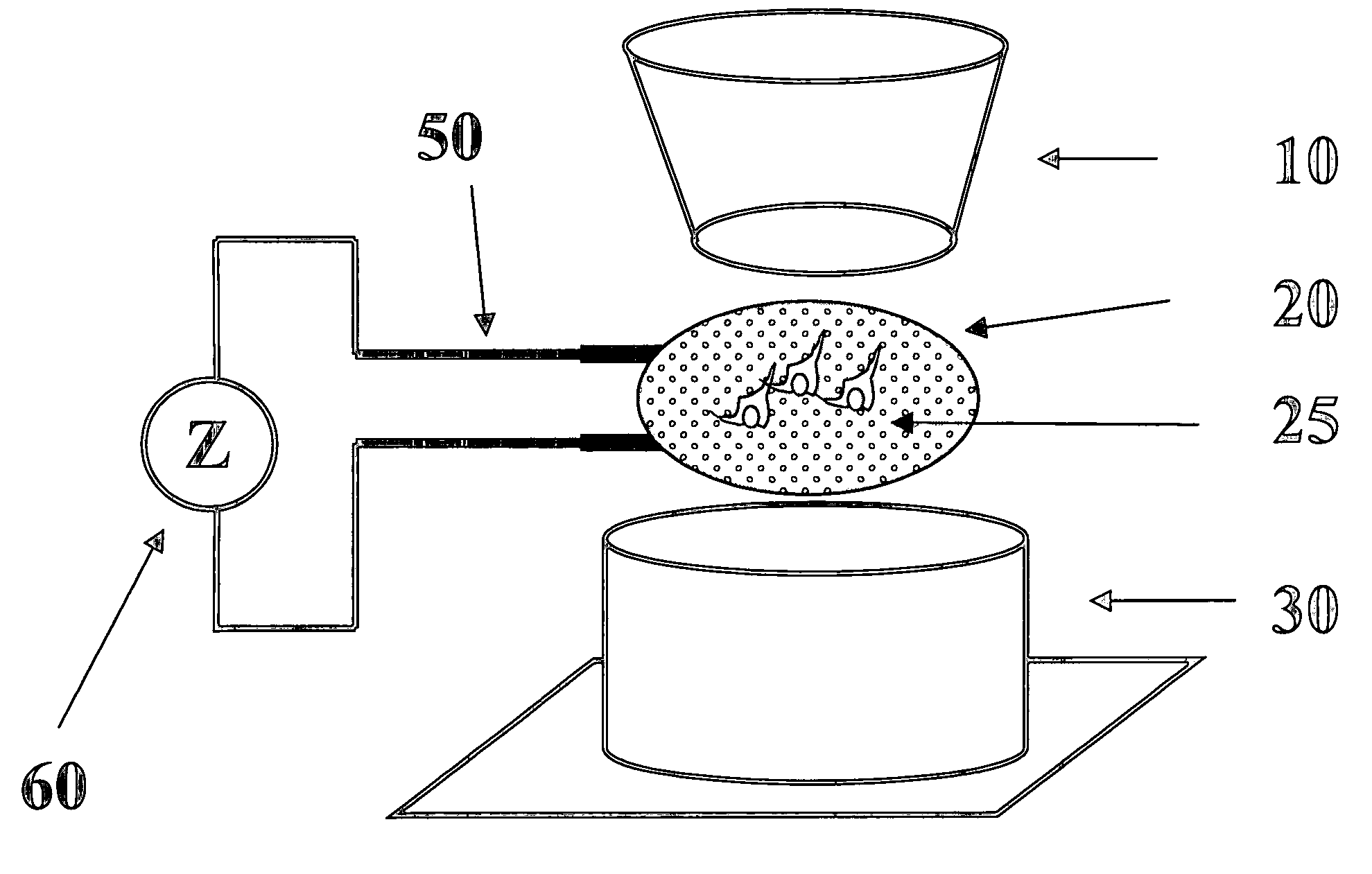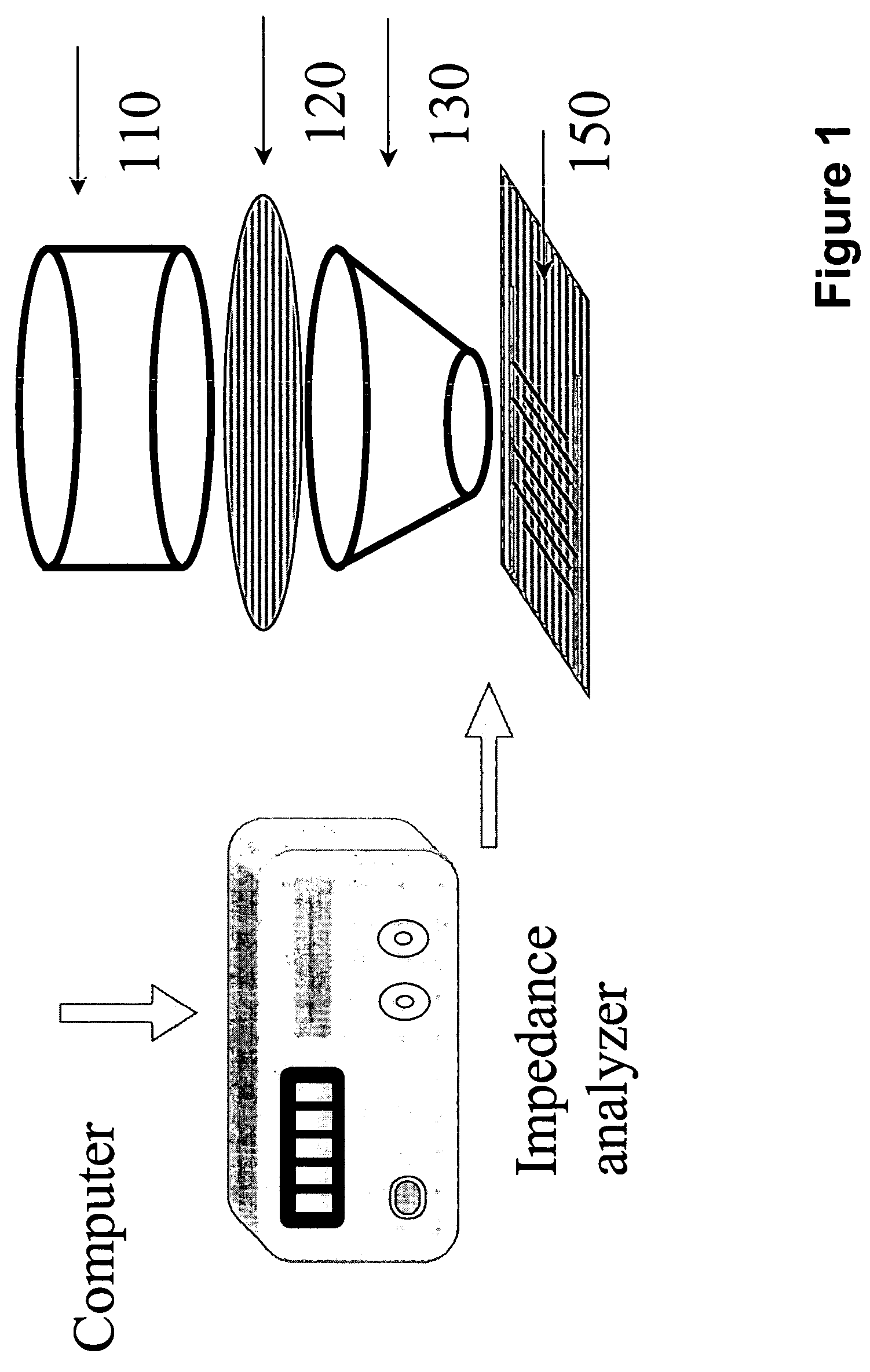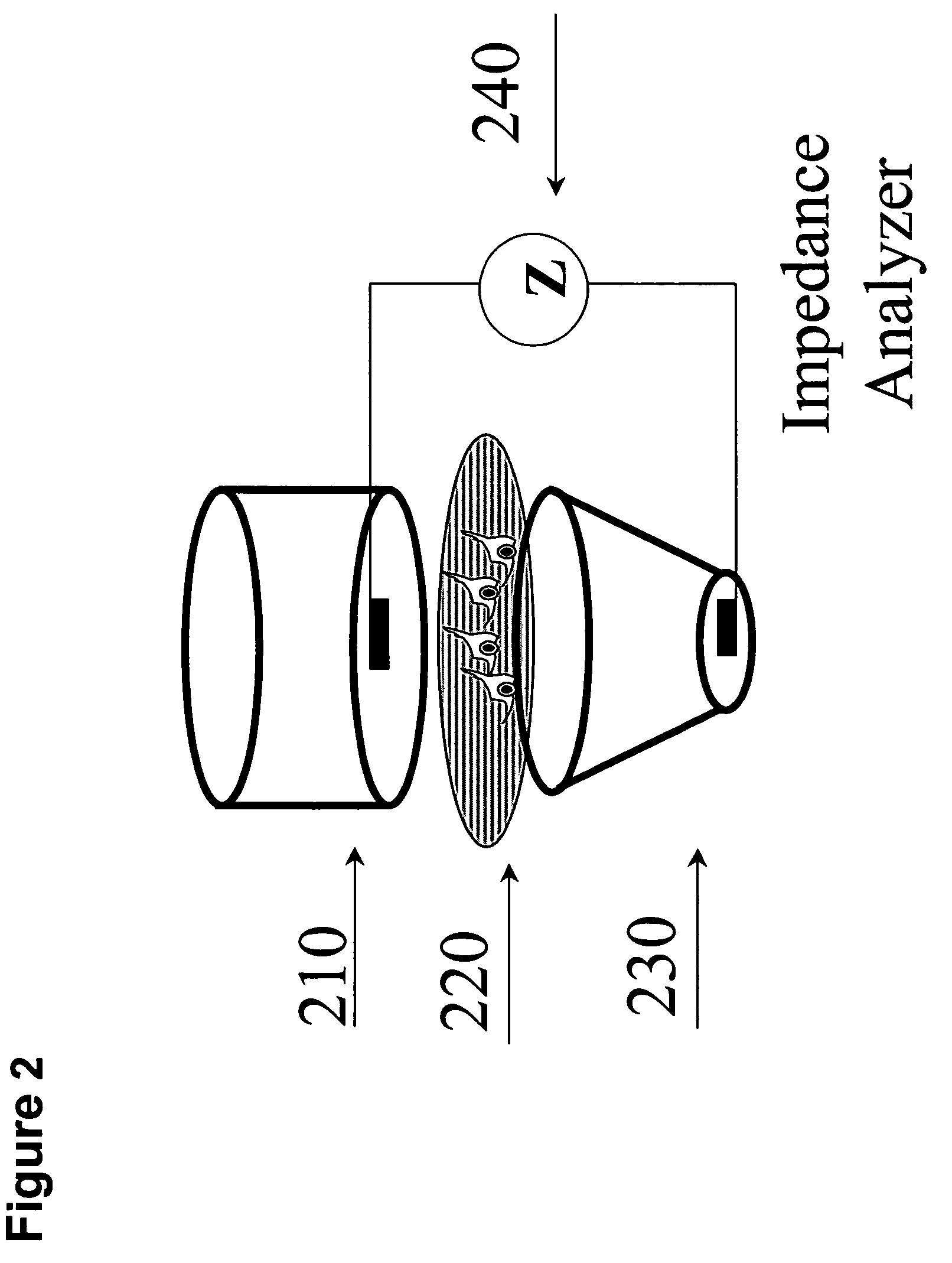Impedance based apparatuses and methods for analyzing cells and particles
a technology of impedance and apparatus, applied in the field of cell and particle analysis, can solve the problems of limiting assay accuracy and throughput, unsuitable for large-scale evaluation of malignant cells, and not being reliable from these two assay systems
- Summary
- Abstract
- Description
- Claims
- Application Information
AI Technical Summary
Benefits of technology
Problems solved by technology
Method used
Image
Examples
example 1
Resistance and Capacitive Reactance for 8 Different Types of Electrodes Attached with or without Cells
[0222]FIG. 3 illustrates impedance and capacitive reactance for 8 different types of electrodes attached with or without NIH 3T3 cells. The diameter of the electrode for 2AA, 2AB, 2AC, 2AD, and 3A is 1 mm; the diameter of the electrode for 2BE, 3B and 3C is 3 mm. The features of each electrode types are different and are provided in Table 2. The surfaces of electrodes were coated with chemical and biological molecules. In this experiment, fibronectin was used. After coating, NIH 3T3 cells were then seeded onto the surfaces of the electrodes. The resistance and reactance (capacitive reactance) were measured at 0 hour (immediately after seeding the cells) and at two hours after the seeding. (A, B) Resistance and capacitive reactance as a function of frequency for eight different types of electrodes. Increase in resistance and decrease in capacitive reactance were seen in all five elec...
example 2
Quantitative Measurement of Cells Using the 3B Electrode
[0226]FIG. 4 illustrates quantitative measurement of cells using the 3B electrode. Serial diluted NIH 3T3 cells (10,000 cells, 5,000 cells, 2,500 cells, 1,250 cells and 625 cells) were added onto the surface of the 3B electrode coated with fibronectin. Resistance and capacitive reactance were measured at 0 hour (immediately after seeding), and at 16 hours after seeding. The curves represent resistance and capacitive reactance data from a given frequency as indicated. T0 curve indicates the baseline resistance and capacitive reactance for the electrodes onto which cells had not been attached. T0-T16 curve indicates the resistance and capacitive reactance changes after cell attached to the electrodes. The current 3B electrode is able to sense less than 600 cells. The dynamic quantification range of the current 3B electrode is between 10,000 and 500 for NIH 3T3 cells.
example 3
Real Time Monitoring of NIH 3T3 and PAE Cell Proliferation Using the 3C and 3B Electrodes
[0227]FIG. 5 illustrates real time monitoring of NIH 3T3 and porcine aortic endothelia (PAE) cell proliferation using the 3C and 3B electrodes. Two thousand five hundred NIH 3T3 cells and 2,500 PAE cells were seeded onto the coated electrodes. For NIH 3T3 cells, the electrode was coated with fibronectin; for PAE cells, the electrode was coated with gelatin. Resistance and capacitive reactance were measured daily to monitor the cell proliferation. Day 0 indicates the measurement immediately after seeding of the cells. Here, the capacitive reactance value shown in the figure is the absolute value. The resistance and capacitive reactance increase with the cultivation time (days) in both cell types, indicating cell proliferation. The NIH 3T3 cell growth plateaued at day 4, while PAE cell growth plateaued at day 5, suggesting the NIH 3T3 cells proliferate faster than PAE.
PUM
 Login to View More
Login to View More Abstract
Description
Claims
Application Information
 Login to View More
Login to View More - R&D
- Intellectual Property
- Life Sciences
- Materials
- Tech Scout
- Unparalleled Data Quality
- Higher Quality Content
- 60% Fewer Hallucinations
Browse by: Latest US Patents, China's latest patents, Technical Efficacy Thesaurus, Application Domain, Technology Topic, Popular Technical Reports.
© 2025 PatSnap. All rights reserved.Legal|Privacy policy|Modern Slavery Act Transparency Statement|Sitemap|About US| Contact US: help@patsnap.com



